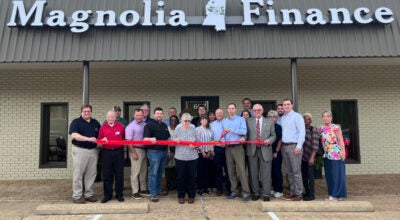Historic District
Published 12:00 am Tuesday, October 20, 2009
By John Howell Sr.
Creation of a Batesville historic district could increase property values and allow owners of commercial property owners a 20 percent tax credit for restoration costs, urban planner Bob Barber told Batesville’s mayor and aldermen Friday.
Barber, the city’s consultant in zoning and planning, met with city officials October 16 to discuss steps to establish a historic district that would tentatively include the Downtown Square, Panola Avenue, Church Street, and portions of Court, Potts and Eureka Streets.
The proposed historic district was identified in a 2003 study conducted by the Batesville Main Street program. The study defined suggested boundaries and inventoried the properties it contained.
Barber named preservation of a town’s historic structures as one of five key “elements that the best communities will work into their program.
“If I ranked them in order I would put preservation if not at the top of the list, very high,” Barber told elected officials.
“We all know that we’ve lost a lot of historic structures,” he added.
Establishment of a historic preservation program that meets federal and state guidelines under the National Historic Preservation Act of 1966 would qualify Batesville as a Certified Local Government (CLG) eligible to participate in programs authorized by the National Historic Preservation Act, according to information from the Mississippi Department of Archives and History (MDAH).
“It’s worthy,” Barber said. “There’s a potential for a nationally recognized historic district.”
The CLG designation would make the city eligible for assistance from MDAH in promoting preservation and preparing guidelines for rehabilitation as well as for application for grants from the Department of Interior’s National Historic Preservation Fund, according to the MDAH web site.
Gaining approval as a Certified Local Government begins with establishing a local preservation commission, Barber said, whose membership “cares for the district. The commission should consist of knowledgeable people who know of the history of the community,” he said.
“Is there any downside to it?” an alderman asked.
“It’s a commitment… that commission has to be supported,” Barber replied.
“Can we override?” Mayor Jerry Autrey asked Barber, referring to decisions by the preservation commission.
“Yes, you’re not giving up any mayor and board authority,” Barber said.
“It’s an additional code, but the code is aimed at historic preservation,” the planner continued.
Barber said that the preservation commission would only regulate exterior alterations of structures within the historic district, acting in both an advisory and regulatory capacity to determine whether a proposed remodeling or other alteration is consistent with the district’s architectural era of construction.
The preservation commission would certify the appropriateness of alterations proposed for structure within the district before the planning commission would issue a building permit. A certificate of appropriateness would also be required before new construction in the district, Barber said.
Barber said that in the 12 years since Hernando first created its historic district, 80 percent of its downtown square has been rehabilitated.
Studies indicate that in a historic district, “Property values will increase by an average of 10 percent,” Barber told the mayor and aldermen. “That was before the recession.”
The urban planner said that the Internal Revenue Service allows a 20 percent income tax credit for approved renovation of commercial buildings to historic standards.
“It’s a tremendous incentive,” Barber said.
The tax credit and grants can be couple with local incentives.
“We’ve got the façade grants and the local tax abatements in place,” City Code Administrator Pam Comer said.
“I think we’re all on the same page with this,” Alderman Stan Harrison said after Barber’s presentation. “I just wish we’d done it 40 years ago.”
The city officials took the proposal under advisement.



